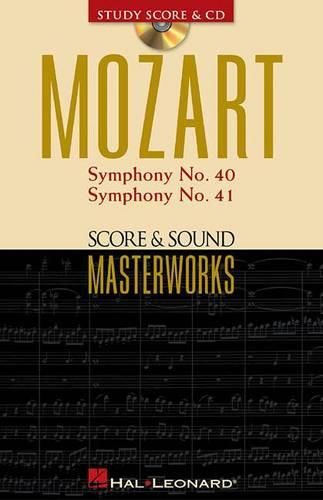Readings Newsletter
Become a Readings Member to make your shopping experience even easier.
Sign in or sign up for free!
You’re not far away from qualifying for FREE standard shipping within Australia
You’ve qualified for FREE standard shipping within Australia
The cart is loading…






(Study Score with CD). Score & Sound Masterworks are convenient, compact and inexpensive score/CD packs perfect for classical music enthusiasts and students. Follow along with the score as you listen to some of the world’s great music. Discover which instruments are playing and in what combination, and admire the orchestration of a master composer. Publications in this series include an interesting article about the composition and history of the featured piece, a helpful reference addressing transposing instruments, and a glossary of musical terms used in the score. Mozart’s last symphonies have been surrounded by myths and tales for most of their history. He wrote them at an astonishing rate in the summer of 1788, yet these pieces seemed to have been neither commissioned nor due for performance. From the brooding angst of the great G Minor Symphony (No. 40) to the triumphant and jubilant Jupiter Symphony (No. 41), Mozart infuses the form of the symphony with a new kind of romantic expression. Among all musical accomplishments, these astonishing symphonies are among humanity’s timeless treasures.
$9.00 standard shipping within Australia
FREE standard shipping within Australia for orders over $100.00
Express & International shipping calculated at checkout
(Study Score with CD). Score & Sound Masterworks are convenient, compact and inexpensive score/CD packs perfect for classical music enthusiasts and students. Follow along with the score as you listen to some of the world’s great music. Discover which instruments are playing and in what combination, and admire the orchestration of a master composer. Publications in this series include an interesting article about the composition and history of the featured piece, a helpful reference addressing transposing instruments, and a glossary of musical terms used in the score. Mozart’s last symphonies have been surrounded by myths and tales for most of their history. He wrote them at an astonishing rate in the summer of 1788, yet these pieces seemed to have been neither commissioned nor due for performance. From the brooding angst of the great G Minor Symphony (No. 40) to the triumphant and jubilant Jupiter Symphony (No. 41), Mozart infuses the form of the symphony with a new kind of romantic expression. Among all musical accomplishments, these astonishing symphonies are among humanity’s timeless treasures.